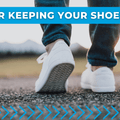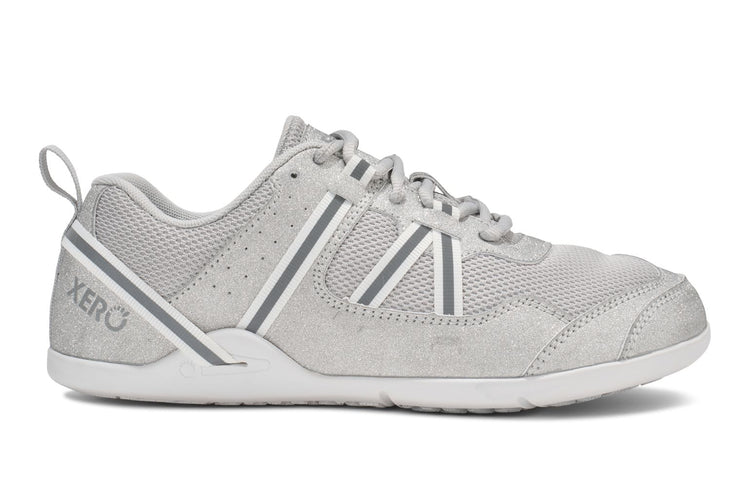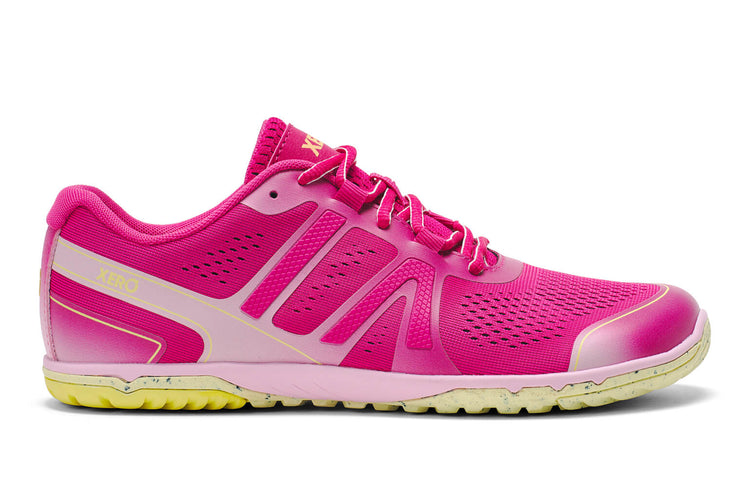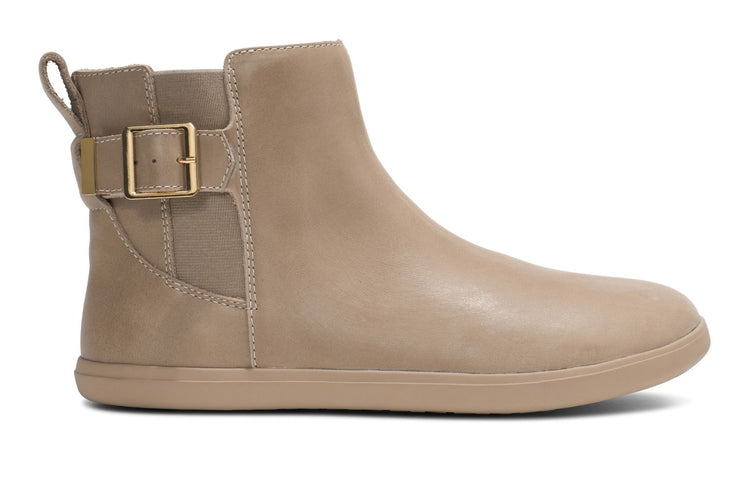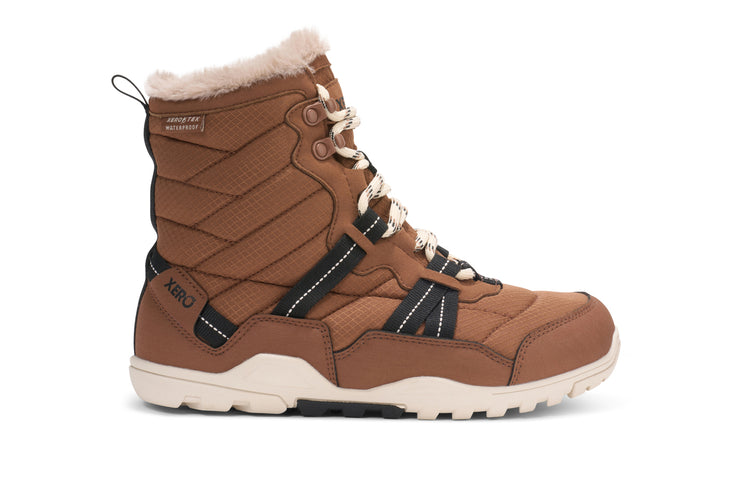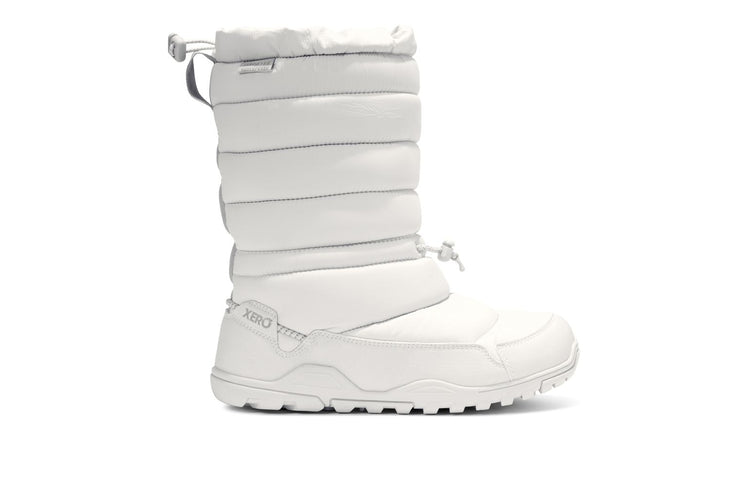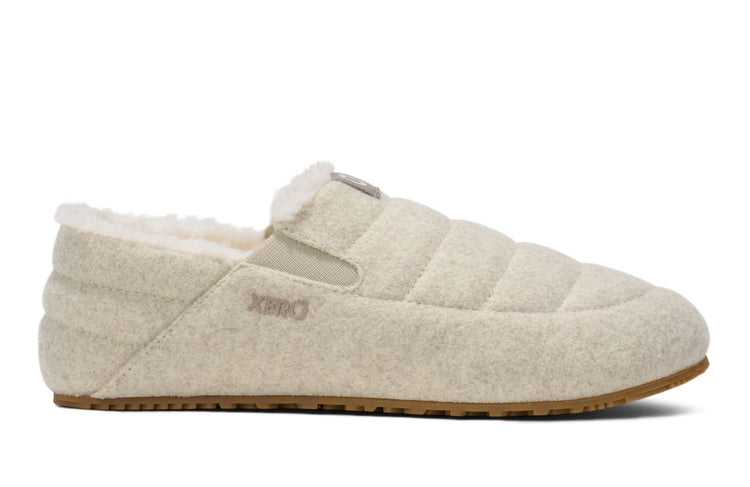“The Dream Shoe”: A Partnership with Xero Shoes & Born to Run 2 Authors
latest News
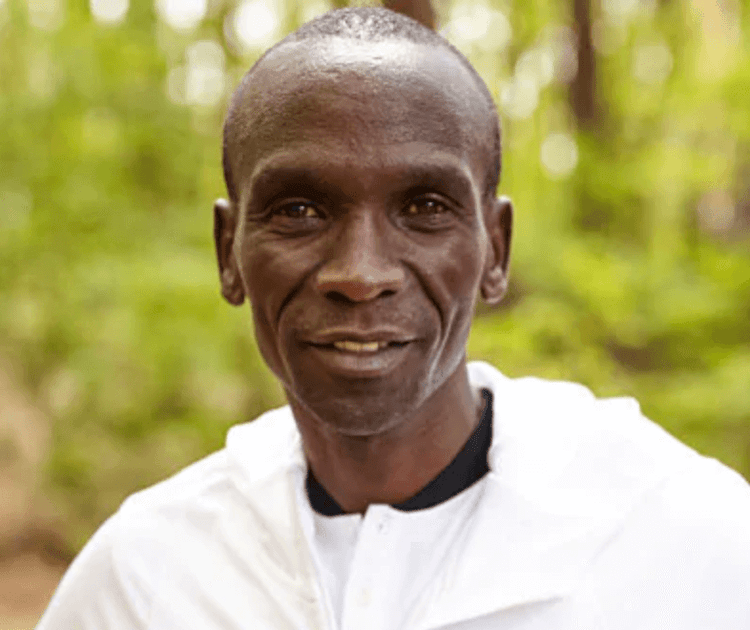
Eliud Kipchoge: It's NOT the shoes!
I'll admit it.I love being right.What am I right about this time?The importance -- or lack thereof -- of shoes in Eliud Kipchoge's sub-2-hour marathon performance.I've talked about how shoes were NOT the delimiting factor in Kipchoge's amazing run here, and in my podcast here, pointing out that the difference between his world record time of 2:01:38 in the Berlin marathon is only 4.58 seconds/mile slower than the sub-2, which was run with pacers, on a flat course (a.k.a. perfect conditions).Well, guess who agrees with me? KIPCHOGE!At Firstpost.com, sub-2-hour marathoner Eliud Kipchoge weighs in on how much of his success came from the Nike shoes he (and his pacers) wore for that event.The answer?Not as much as Nike or most commentators said.More specifically:“It is my legs that are still doing the running,” the Kenyan marathon runner told Firstpost in an email interaction when asked about the impact of his shoes in the eventual timing of 1:59:40 secs.Agreed.Running ~13 miles per hour for almost 2 hours is an AMAZING feat (pun intended).But the way his accomplishment has been reported is mostly about how the shoes allowed him to do this.And Kipchoge further downplays the role of shoes in his success:“Innovations are part of sport and always have been. With running, the effect of technology will always be minimal especially if you compare it to other sports.”Distance running coach, Dr. Phil Maffetone, thinks shoes DO matter, but not for the reason most people believe.In his book, "1:59 - The Sub-Two-Hour Marathon is Within Reach," Maffetone thinks the first person to run a sub-2 in a normal race will do so barefoot (I think his 2nd choice would be something like our Speed Force).Some day, I hope we have the resources to pick the world's best marathoner, support him (or her!) to train barefoot or in Xero Shoes, and show that lightweight (you can't get lighter than bare feet) and natural (hard to get more natural than Xero Shoes) will "let your legs do the running" to a sub-2.

Do You Need Arch Support? You Don’t. Here’s Why.
This post was recently updated September 26, 2023I know that when I say “There is no support for arch support,” some people respond, “Yeah, but you sell minimalist shoes with no support, so of course you would say that.”To those people I say, “You have the order backwards. I discovered the lack of support for arch support long before starting Xero Shoes.”In fact, it was that discovery – and how getting out of shoes with arch support – changed my life. And now with over 1.5 million people who’ve switched to Xero Shoes, they’ve discovered the same.But, there’s no need to take my word for it.“For years, I thought I needed to buy shoes that were cushioned and had arch support. Foolish me, I found Xero shoes and my life changed. I walk better, I feel better and I feel confident with my balance. Thank you!”Keep reading why you don’t need arch support in shoes. Why You Don’t Need Arch Support - Even if You Think You Do While you may think extra support helps, and it may even feel good, it actually may be causing problems that you didn’t anticipate. Problems that may not be affecting you now, but could in the future.Let me explain by starting with some simple questions. So simple, in fact, you may think I’m joking by even asking them.Here we go:1. Is weaker better than stronger?I’m betting you said No. Okay, so if stronger is better, then think about your biceps and here’s the next question:2. How do you make your biceps stronger?You’re probably thinking about doing curls, or some other sort of exercise, right?In short, USING your arm can make it stronger. Which brings us to the next question:3. How do you make your arm weaker?This is basic “use it or lose it.” Don’t use your arm and it gets weaker.Put your arm in a cast, and 8 weeks later it comes out weak and atrophied.Now let’s apply all of that to your feet.Think about shoes with stiff soles and arch support, or adding orthotics or other inserts.They don’t let your feet move. It’s like putting them in a cast.And while your feet may feel good because your muscles, ligaments and tendons are relaxing… your feet are getting weaker.Research from Katrina Protopapas and others showed that when healthy people added arch support to their shoes, their feet got up to 17% weaker in just 12 weeks.Imagine what that does over time.Here’s a question that’s not simple sounding, and the implications are HUGE for your health and wellbeing:What kind of problems could weak feet lead to?At the very least, it could keep your feet from feeling as good at the end of the day as they did at the beginning. Maybe you can’t do something as simple as walking across your floor in bare feet. Does that really sound “normal”?Or maybe, over time, when you get older, something even worse could happen when you have weak feet that can’t balance. I’m sure you can imagine.How to Solve the Weak Feet ProblemYou already know.Back to our arm analogy – Do you think that, once you get out of the cast, it’s worth spending a couple months doing exercises so you can then use your arm for the rest of your life… or would you rather keep it in a sling and never use it?Of course you do the exercises.You go back to the gym, but use a light weight for maybe one set of 10 reps of a biceps curl.Then, as you get stronger, you SLOWLY add more weight, or more reps, or more sets, based on the feedback from your body.Well, it’s the same thing to make your feet stronger.You could do an exercise program specifically designed to build foot strength.But, even if the program only took minutes a day, and you could do it while watching TV, you might not do it.That’s okay, because there’s a better way.Research from Dr. Sarah Ridge showed that just walking in a “barefoot shoe” builds foot and arch strength as much as doing a foot exercise program.Frankly, walking in bare feet might be best, but that’s not practical for most people, most of the time.Xero Shoes makes casual and performance shoes, boots, and sandals that are all designed to be as close to barefoot as possible, plus the protection you might need, and style you’ll want.You could start slowly, by wearing a pair for 30-60 minutes. And, like going to the gym, add more time when your body tells you you’re ready.There’s no rush.Even if it takes a couple months to build up enough arch strength – so your arches are supporting you – that strength can serve you for the rest of your life.That strength can help you do the things you love – walk, run, hike, play sports, work out, you name it. Or maybe even help you do things you’ve never done before!By the way, Dr. Ridge says that Xero Shoes should give the same benefits of the shoes she used in her study.Here are some Xero Shoes best-sellers.Not sure which shoe is right for you. Take the Shoe Finder Quiz.Want More Proof? More Research about Arch Support?In case you’re still not sure, here’s more RESEARCH that backs up the idea that arch support — whether it’s built into the shoe, or added with an insole or orthotic, isn’t what it’s cracked up to be.And the independent shoe review site, RunRepeat.com, has just posted an article asking the question “Truth or Hype?” when it comes to supporting the arch.The synopsis is in the infographic from their site, below:I take issue with the recommendation that you should only use arch support if a podiatrist recommends it, given that most podiatrists don't know about this research and think, incorrectly, that you DO need arch support.So, I'd rewrite the recommendation to "recommended by a podiatrist who understands natural movement and knows that arch support is a temporary treatment for healing in most cases."By the way, my favorite part of the article on RunRepeat.com is actually the list of Best Rated Running Shoes on the right hand side.As of this writing, here's what that list shows... notice that THREE of the top 5 are Xero Shoes! (and I expect that the Speed Force will crack the Top 5, too):Closing Out: Why You Don’t Need Arch SupportShoes with no arch support allow your feet to move freely and naturally. Instead of relying on external support of shoes with arch, your feet strengthen naturally and become their own support system.Switching to a shoe that does not have arch support can take a bit of time, but your feet will thank you in the long run.
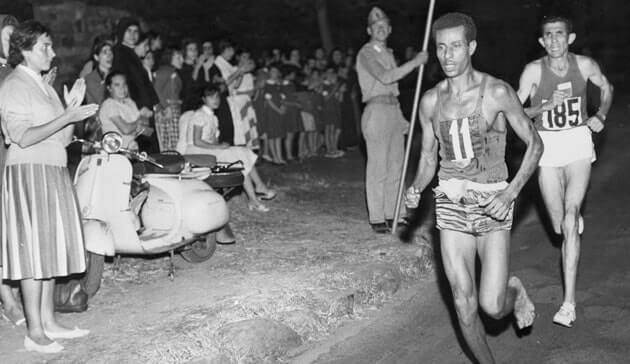
Abebe Bikila and his Barefoot Marathon Gold Medal
While the 2020 Tokyo Olympics are postponed until next year, now as great time to look back at one of the moments that helped shape the modern barefoot running movement.It was 60 years ago that Abebe Bikila won a gold medal in the Rome Olympics running in bare feet.A great article called OLYMPICS FLASHBACKS: THE SCIENCE OF BAREFOOT RUNNING AND WINNING GOLD shares the details, many of which people don't know.For one, Bikila didn't plan to run in bare feet.The shoes from his footwear sponsor gave him blisters so he decided not to wear them.The article also talks about how:In the past two decades, emerging research and Christopher McDougall's 2011 bestseller Born to Run kicked up a fiery debate about the merits of barefoot running. Some experts argue modern running shoes hamper humans' natural stride, while others say they are vital training tools to prevent injury and stabilize the foot.While there's no arguing that the debate is "fiery," when the barefoot vs. shoes conversation is presented, it's often done as if the two sides are evenly matched.They're not.There's no question that modern shoes affect people's stride. Research from Dr. Irene Davis at Harvard, and many others, repeatedly show this, and how shoes may even CAUSE the problems that they claim to cure or, at least, don't help the way most people expect after reading the promo material from the manufacturers.For example, when it comes to how well modern shoes "prevent injury," let's just look at Nike's new React Infinity Run.This shoe is marketed as "Designed to reduce injury" and "In an independent study, the shoe reduced injury rates by 50%."(I had a photo of their in-store marketing, but I can't find it :-( )Well, both are true... ish.Of course ALL modern performance shoes are designed to reduce injury. Nobody makes or sells a shoe that they know will cause MORE injuries.But the "independent" and "50%" are a bit of a red herring.The independent study was designed by and funded by Nike.The 50% injury reduction is a way of hiding the actual numbers -- over 30% of the runners in the 12-week study wearing Nike's best-selling, motion-controlled, padded, elevated heel, flared sole running shoe got injured, while "only" a bit over 14% got injured in the new shoe.Sure that's 50% better... but that's about 1 out of 7 who got injured in under 12 weeks.Think of it this way, which restaurant would you go to: The one that promises you'll only get food poisoning in one out of 3 meals, or the one who says only 1 out 7 will make you sick?Neither, of course!Back to the uneven debate -- When the "pro-barefoot" crowd makes their arguments, they can site studies to back up claims about reducing impact forces, reducing forces through the joints, etc.But the "anti-barefoot" side often cites "anti-barefoot studies" that, often, they paid for and that, often, are researching factors that are "straw men" (arguments that no barefooter ever made, like "barefoot running improves VO2Max").Using the example from the article about stabilizing the foot, it would be EASY to show a study that some shoe stabilizes the foot... IF that study existed."Of course one challenge in creating a study about stabilization is that the design elements used to "stabilize" the foot -- e.g. foam, typically -- break down over time.Plus, there is ZERO evidence that the foot typically needs to be stabilized. Pronation, for example, is not correlated to any injury.I was on a panel discussion at the American College of Sports Medicine, where a representative from Adidas said that while their goal is to reduce injury and improve performance, they had no data showing they could deliver these benefits because doing so would be time consuming, expensive, and have many confounding factors.Uh...If any major shoe brand could demonstrate scientifically that their shoe was better than that of another major shoe brand, that would be worth BILLIONS of dollars per year.To say that they haven't proven they can improve performance and reduce injury because "it's hard" is ludicrous.At best, what happens now is someone wins a race in a new shoe and other runners become so worried that the shoe may have been the causal factor in the win, and they all buy that shoe out of fear they're missing out on a competitive advantage. And then other shoe companies rush to make similar shoes out of the same fear!Look, it's true there isn't a study that proves that running naturally, either barefoot or in truly minimalist shoes, is better than being in shoes.But that IS because doing such a study is expensive and time consuming and has confounding factors -- all of which could be overcome, of course, with the kind of money that "pro-barefoot" companies like Xero Shoes simply don't have.And the question is, "Why haven't the big shoe companies funded that study?" If they did, and the study landed in their favor, it would shut up people like me, and the millions who've found that natural movement was helpful for them.But I've heard from executives at some of those "Big Shoe" companies who believe that natural movement IS better, but that they can't make shoes like Xero Shoes since that would be "against brand."Anyway, pardon the rant.Frankly, that was a tangent from the important bit: Read the article about Bikila. It's a great reminder of how what's possible is often much more than what we imagine (or are told).
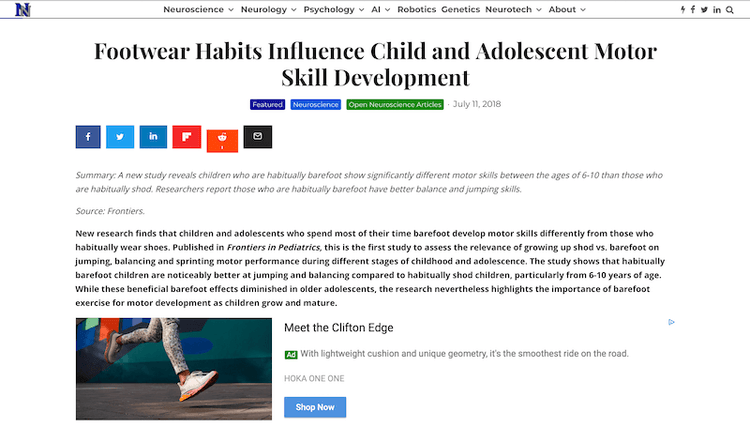
Is Barefoot Best for Kids? Research says...
This just in to the "I'm not surprised" department:A new study reveals children who are habitually barefoot show significantly different motor skills between the ages of 6-10 than those who are habitually shod. Researchers report those who are habitually barefoot have better balance and jumping skills.You can read the article here.I'm curious to hear what you see when you go to the article. Because, in the great irony that Internet advertising sometimes delivers, what I see when I go to an article recommending that kids be barefoot is an ad for one of the least barefoot shoe you can buy:HYSTERICAL.Now I know some people will read this and say, "But Steven, you sell kids shoes!"It's true. We do.But keep in mind these few things: We always say that "barefoot is best"... when appropriate (sometimes it's not, for various reasons) Most people will never spend the majority of their time fully barefoot We make our shoes, boots and sandals to give you the closest thing to a barefoot experience that you can have, given the constraints about "appropriate." For example, for those who aren't yet skilled enough and adapted enough to hike barefoot, we make trail shoes that are still lightweight, flexible, have wide toe boxes, and give you as much ground feel as possible while still giving you the protection and traction you currently need Give the above, we like to remind ourselves of something Harvard's Dr. Irene Davis has said that if kids grow up in footwear that lets their feet move and feel naturally, in 20 years we won't have adults who are being treated for the issues today's adults have. If your kids are spending more time barefoot or in minimalist footwear, what have you noticed about them compared to kids in constricting, padded, motion-controlled shoes (like that one in the ad I saw)?Let us know in the comments, below...
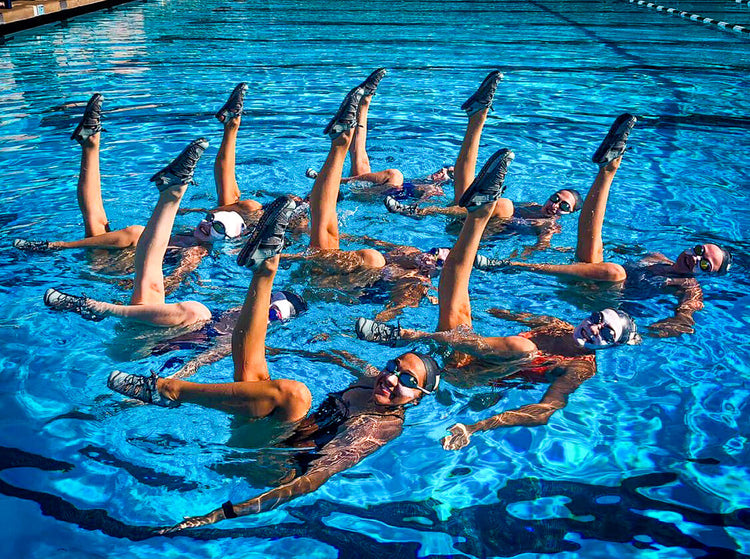
Xero Shoes Sponsors USA Artistic Swimming
FOR IMMEDIATE RELEASEEmily Falkenberg | USAAS | emily@usaartisticswim.orgLaura Beachy | Xero Shoes | beachy@beachymedia.comUSA Artistic Swimming Announces Partnership with Xero ShoesCOLORADO SPRINGS, CO – (July 8, 2020) - USA Artistic Swimming signs Xero Shoes as its official footwear partner providing athletes innovative shoes that match the team’s style in the water. “They are not your conventional shoe, and we are not your conventional sport,” said USA Artistic Swimming CEO, Adam Andrasko. “We both embrace what is special about ourselves and use it in a positive way.”Established 41 years ago, USA Artistic Swimming officially rebranded from USA Synchronized Swimming in March. Artistic swimming is a women's Olympic discipline which combines technical perfection, synchronisation, choreography, artistry and expressive power. Athletes wear beautifully decorated swimsuits and waterproof make-up. They often perform choreography and use music that is unique to their heritage, creating a rich and distinctive spectacle.Xero Shoes’ lightweight footwear prides itself on minimalism and natural movement. Xero Shoes have sold hundreds of thousands of shoes, boots, and sandals to customers in 97 countries, ages 2-92, and will now be worn by the USA Artistic Swimming Senior National Team at every international competition. "We're so excited that USAAS asked us to support their incredible athletes and coaches,” said Steven Sashen, Xero Shoes CEO. “We are looking forward to having lots of fun together and helping the team reach their goals, feet first." About USA Artistic SwimmingUSA Artistic Swimming [USAAS] was established as a nonprofit organization in 1979 and is the United States national governing body for the sport. It is recognized by the International Olympic Committee, the United States Olympic Committee and FINA (Federation International de Natation Amateur) — the international governing federation. USAAS organizes, participates in, and promotes a variety of competitive events each year. These events begin at the local level and continue in the following categories: Age Group (12-19), Junior (15-18), Senior and Masters (20+). https://www.teamusa.org/USA-Artistic-SwimmingAbout Xero ShoesFeel The World, Inc. (dba Xero Shoes) of Broomfield, CO, manufactures Xero Shoes®, addictively comfortable, lightweight, performance and casual sandals and shoes built with a “foot-first” design. Durable, stylish and affordable — Xero Shoes supply the fun and benefits of natural, barefoot-inspired movement with a layer of protection and comfort. FTWI launched in December 2009 and now has customers ages 2 to 92, in 97 countries who wear Xero Shoes for walking, hiking, yoga and gym-going, CrossFit, kayaking, rafting, paddle boarding, jogging, and even running hundred-mile ultra marathons. www.xeroshoes.com
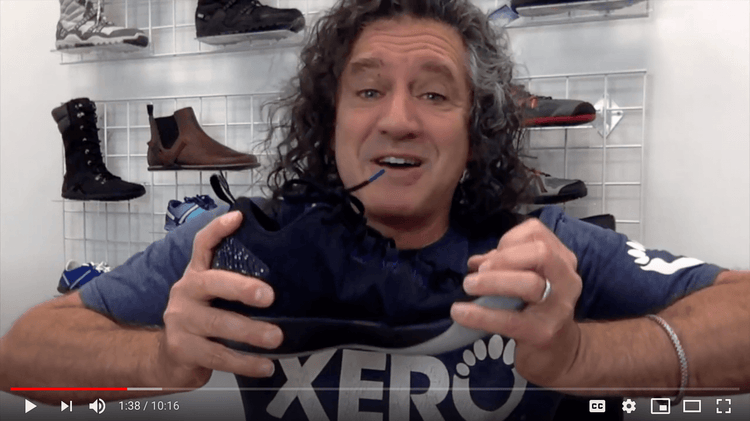
How to find TRULY comfortable shoes
The secret to finding comfortable shoes...It's probably not what you think.And it's definitely not what "Big Shoe" companies have been saying for the last 50 years.It's not because you need more arch support or better cushioning or to control your pronation or supination.The secret is actually what humans have been doing for ages.The secret to TRUE comfort is letting your feet do what's NATURAL.Think about this -- did you know 1/4 of the bones and joints of your ENTIRE body are in your feet and ankles?Did you know you have more nerve endings in your soles than anywhere but your fingertips or lips?CLEARLY, you're supposed to USE those things at the end of your legs.Your feet are made to bend and flex and move and FEEL the world (you'll want to do that safely, and I'll show you how).And it gets worse >> When your feet can't do their job, that function of helping you move and balance tries - UNSUCCESSFULLY -- to move "upstream" into your ankle, your knee, your hip, and your back.You want to let your feet do their job, so the rest of your body can do its job.But most shoes do the opposite of what's natural -- they squeeze your toes together, they elevate your heel (which messes with your posture), they insulate you from the ground so your brain can't tell what's going on with your feet (which means it doesn't have the info it needs to help you move your body efficiently and enjoyably).And NO amount of cushioning protects you from the impact of walking or running, or even just standing.ANOTHER QUESTION -- Remember being a kid on a warm summer day and going outside, kicking off your shoes, and feeling the grass between your toes, or the sand under your feet, or the water around your ankles?Remember how much fun it was to PLAY... until it got so dark your parents had to drag you home, even though you couldn't see your hand in front of your face or the ball you were trying to kick or hit?You can have that feeling of fun and freedom NOW... at any age.It comes from letting your feet do what's natural.Now, I'm NOT suggesting you run around barefoot like some aging hippy (I know that's what I look like, but my wife said she'd leave me if I cut my hair!)Once my wife and I discovered the fun and the benefits of natural movement, we started Xero Shoes to make footwear that LETS YOUR FEET BE FEET: - Natural Fit -- wide toe boxes let your toes spread and relax. A non-elevated (zero-drop) heel for proper posture. - Natural Motion -- super flexible to let your feet bend and move naturally. Low-to-the-ground for balance and agility. - Natural Feel -- the patented FeelTrue® soles give you just-right protection while still giving the ground feedback your brain needs for efficient, natural movement. All our casual and performance shoes, boots and sandals are super lightweight. They're made for almost any activity you do -- walk, run, hike, workout, do yoga or CrossFit, or even just stand on your feet all day for work.They're so comfortable that at the end of the day you may forget to take them off!We've had people email us to say, "I got into bed and then realized I was still wearing my Xero Shoes!"Plus they're affordable and so durable that they have a 5,000 mile sole warranty.Oh, and yes, we WERE on Shark Tank ;-)We've helped hundreds of thousands of people discover the fun, comfort, and benefits of natural movement and we hope you decide to do the same.Go to https://xeroshoes.com/shop/ to see which styles have your name on them. Check out the reviews (over 17,353 5-star reviews!), and get ready to Live Life Feet First!(And if you have any questions, our Customer Happiness Team is available to help -- 303.447.3100 or support@xeroshoes.com)
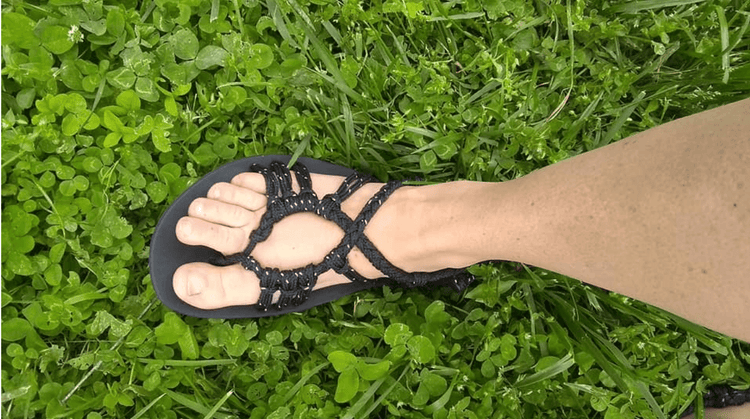
Kelly C's Super Cool DIY Sandal Tying Style
We believe anyone can have the superpower of making their own shoes. Our DIY Kit allows you to cut your footbed and lace away as you wish. However, some of our customers, like Kelly Culp, take it a step further and create extraordinary lace styles like this one, to share with the Xero Shoes world. With these instructions and 10 simple steps, now you can create this stylish masterpiece too, that is simple and takes no time at all but will you make people stop and ask, where did you get those sandals!?*Note: This design takes 3 sets of laces, so get wild with your own personal color scheme!Step One: Punch your holes Once you get your kit in the mail, step on the outsole and mark where your toe hole needs to be for YOU. Then do a double hole punch to pull 2 sets of your laces through.Place three hole punches on either side of your foot as seen in this image. Kelly added an additional hole punch just in front of the arch (seen on the left side of the outsole.) Step Two: Braid your laces (above)Step Three: Create adjustable loopsTake your third set of laces and pull in adjustable loops, the 3 hole punches on the inside of the outsole. Step Four: Fold Laces overFold your laces as seen below so that you can pull the braided laces through in the next step.Step Five: Pull Braided laces through loopsThe loops on the bottom will allow you to adjust the fit when finished. Step Six: Repeat steps 3-5 on the other side of your outsoleStep Seven: Arch Loops and Size AdjustmentsRepeat the process once more, creating loops on both sides of the arch of the foot and pull the braid through. Make final adjustments to your loops so that your feet can slip in comfortably. This is what your sandal should now look like from the top. Feeling those superpowers yet? Good, let’s finish these beauties up. Step Eight: Trim bottom of the laces to about 1/4 of an inch (left). Step Nine: Melt the ends with a lighter/candle and flatten with the backside of the pliers.Step Ten: This is it! Your last step! Just use a square knot technique to create a slide closure (below, Left). Your final knot should look like the below, right image.If your knot looks like this, cheers, you’ve just successfully tied off a square knot and completed Kelly C.'s tying design.Tag us on Instagram if you try this lacing style. And if you come up with cool, new tying ideas, be sure to put them on our Tying Page
COVID-19 Shipping
Due to COVID-19, many countries have suspended postal deliveries, and many others are experiencing extremely long delivery times, something we, unfortunately, learned AFTER shipping many parcels during our recent sale.The below list includes countries we are currently unable to ship to due to COVID-19.Please note this list includes Israel. In addition, there may be significant delays with shipments to any international location, including Japan and Europe.If you're in one of these countries please check xeroshoes.com/stores to see if there's a retailer or distributor nearer to you that's open and/or able to ship to you. New Restricted Countries Bermuda Brunei Cape Verde French Guiana Israel Italy Saudi Arabia St. Martin UAE Western Sahara Updated March 27th, 2024
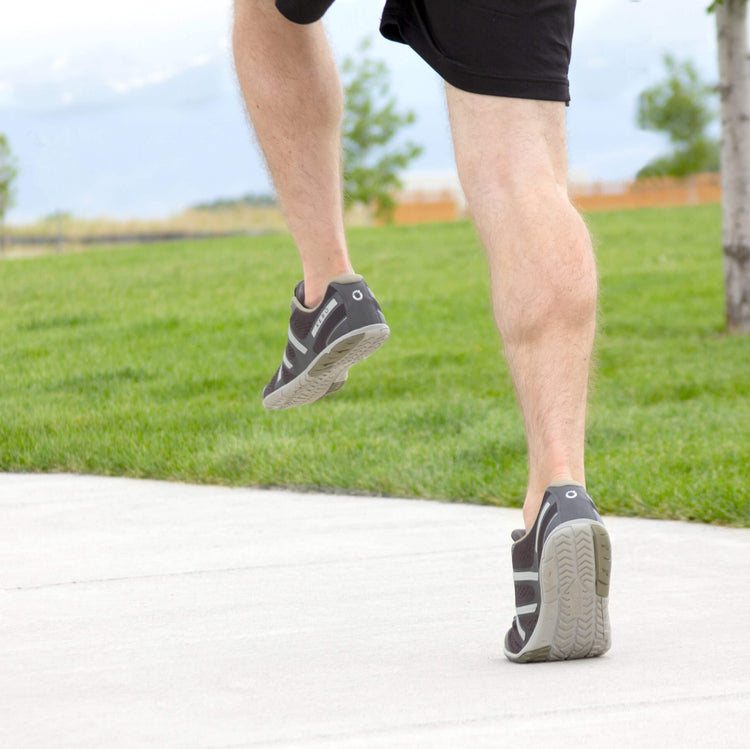
How to Avoid Injuries with Minimalist Shoes - Xero Shoes
How To Avoid Injuries When Transitioning To Minimalist Shoesby Danny Dreyer, Founder of ChiRunning/ChiWalking, www.chirunning.comUpdated: July 22, 2022The minimalist running shoe boom, a trend that the pain-free ChiRunning technique welcomes, has led to a discussion about the issue of running injuries. There have been reports of new types or increased rates of injuries resulting from running in minimalist running shoes. This is ironic, since the reason many people have been inspired to try minimalist shoes is to prevent or alleviate injuries.I’m a fan of minimalist running shoes. But they aren’t magic. The idea that switching to minimalist shoes will, all by itself, keep you from injury is wishful thinking. They can indeed help you learn to run in a way that is easier on your body. But it is important to understand how minimalist shoes help — and how you can cooperate in the process.So I’m going to first explain why switching to minimalist shoes might lead to injuries in some people. Then I’ll explain how minimalist shoes can actually make you a better runner who is less likely to experience injuries.“Better” Shoes Lead to Bad HabitsIn order to understand why minimalist shoes can lead to problems, we first need to talk about the more common running shoes people are used to. Why? Because when you get used to running in certain kinds of shoes, you actually get used to running with a certain form. Form is where all the action is, as I will explain a bit later.But first, let me tell you about “traditional” running shoes. As “power running” became widespread in the ‘80s and ‘90s, running shoes grew clunkier and thicker. Shoe companies taught us that more cushioning equaled better protection from ground reaction forces for a lowered injury risk.You can see the logic here. It seems obvious to everyone that running involves a lot of impact with the ground and that impact is connected to various kinds of running-related injuries. Cushioning should help to reduce impact, which in theory should lead to fewer injuries connected with it. So conventional shoes have continuously added more of it.That’s the theory. In reality, the excess padding in conventional shoes doesn’t actually reduce impact forces and it inhibits our ability to feel the impact of our foot strikes and the subsequent damage we may be doing to our bones, joints, and muscles with each step. It is easy to end up with a form that generates a lot of impact force but we just don’t notice it because of the cushioning.Research has provided evidence to support this. A study by Dr. Daniel Lieberman found that the cushioned, elevated heel of “traditional” running shoes encourages runners to use a rear-foot strike with greater collision forces compared to the mid- or fore-foot strike and smaller collision forces of barefoot runners.And what about injury risk with those heavily-padded running shoes? We can at least say this much. Injury rates for runners do not seem to have decreased over the years, even as padding has become more pronounced. Somewhere between 30-70% of runners are injured each year.The really important thing to notice here is this: there are different ways to run and different foot strike patterns. Conventional shoes seem to encourage running with a form where the heel strikes first.How Can Minimalist Shoes Lead to Injuries?Many people have become interested in minimalist shoes because they have heard that they are more natural and better for you. Always in search of the magic bullet, people tend to go to extremes when they hear of something promising. It happens with diets, with politics, and in this case, with running shoes.When you take a runner who is used to running in thick-soled conventional running shoes and landing on the heel and put him or her in a pair of minimalist shoes with very little padding, you can easily see the potential for problems. If that runner continues to heel strike, with their foot landing in front of their body, the impact forces that used to be somewhat blunted by the thick padding are now sent jarringly through the bones of the foot, ankle, and knee. That will take a toll on the body.One of the things that helped inspire the barefoot running movement and a greater interest in minimalist footwear was the book Born to Run. In it, author Christopher McDougall told the story of how he loved running but had been plagued by injuries. He happened to hear about a tribe in Mexico famed for both long-distance running and general well-being and decided to investigate.He found, to his surprise, that they ran in thin, basic sandals without any support (called huaraches). The key conclusion he draws in the book, however, is this: it wasn’t so much the fact that they ran in sandals that kept them injury free. Rather, it was the form that the sandals encouraged them to adopt that was the key.In brief, McDougall argues that form is the key factor and form follows footwear.So simply changing the type of running shoes you are wearing isn’t going to help you all by itself. Indeed, it can even make things worse.Here’s How Minimalist Shoes May Help Prevent Injuries ChiRunning has advocated for minimal shoes since 1999, but always with the caveat of one of the pain-free ChiRunning technique’s main tenets: Gradual Progress.Putting on a pair of minimal shoes does not automatically change years of movement patterns you have established. The truth is running in minimal shoes or barefoot shoes will give you form feedback that overbuilt shoes won’t. The key to preventing injury lies in responding to this feedback by making adjustments to your technique.In other words, minimalist shoes allow you to actually feel what is going on in your body. When you don’t have a lot of padding to cover it up, crashing your heel into the ground hurts. Paying careful attention to what you’re feeling and being willing to adjust your form accordingly is the key to adopting a form that will be gentle on your body and minimize your chances of injury.Practical Tips for Getting Started with Minimalist Shoes without Injury RiskFor a healthy transition, follow these tips to avoid overuse injuries that can plague minimalist or barefoot runners: Take it slowly and don’t expect to be running your current mileage as you switch from your current shoes to barefoot running or minimalist shoes. If you’re transitioning to barefoot running, do it on a hard surface or a track and not on grass (contrary to popular opinion). Because grass offers such a soft surface, it can be difficult to tell if you’re heel striking. Running on a hard surface will give you immediate form feedback and “force” you to land softly or suffer the pain. If you go cold turkey and toss your old shoes in exchange for minimalist or barefoot running, start by running very short distance intervals, such as 200m or less, just to see how it feels. Then, walk for the same distance. This helps toughen your feet without creating as much impact as running. Switch back and forth between walking and running as your body allows. The 10% increase rule applies here – start with very short runs and add no more than 10% of an increase in mileage (or time on your feet) in one week. Be very cautious if you’re switching to minimalist or barefoot running if your BMI is 25 or higher, as the increase of impact to unprotected feet magnifies significantly if you’re overweight. If your BMI is 30+, you might consider losing some weight before switching to the minimalist approach. Try walking in minimalist shoes first and increase your mileage slowly. For at least the first month, do most, if not all, minimalist or barefoot runs on level ground, not on hills. Running uphill places increased stress on your Achilles’ tendons, while running downhill places more impact and stress on your plantar fascia, the soft tissues of the bottoms of your feet, as well as your calves and your shins. Make sure you are running with biomechanically correct running form on the first day of your switch to minimalist or barefoot running. Shorten your stride Don’t heel strike – land midfoot Keep your knees bent Relax your lower legs throughout your stride cycle Maintain good posture with a slight forward lean from the ankles When approached mindfully, there is no reason why anyone should suffer injury from switching to barefoot or minimalist running. Without the extra bulk and padding, your body will truly sense what the ground feels like and respond accordingly. Educate your feet gradually, and allow your body to adapt at its own pace.Ready to make the transition? Find the perfect pair of Xero Shoes for your journey.The content of this post does not constitute and is not intended to be a substitute for professional medical advice, diagnosis or treatment. Always seek the advice of a physician or other qualified health provider with any questions or concerns you may have about your health or a medical condition.Answers to a Couple Common QuestionsAre minimalist shoes the same thing as barefoot shoes?They can be, but manufacturers are not always consistent in the way they use these terms to describe their running shoes. In the most basic sense, minimalist shoes are supposed to be just what they sound like: as little shoe as possible to do what a shoe’s primary function is — to protect your foot.True barefoot shoes will have three key features. They’ll be zero-drop, meaning there is no elevated heal but they have the same level of padding from heel to toe. They will have minimal padding to allow your foot to feel and interact with the ground naturally. They’ll have a wide toe box to give your feet the room they need to move. Sometimes minimalist shoes have all these features, sometimes they don’t. So do your homework and make sure the “minimalist” shoes (or barefoot shoes) you are buying give you the true minimalist experience.At Xero Shoes, all our footwear has the features just listed and is also super lightweight. We have a broad line of products for different uses. Find your shoe here.Is running barefoot the same as running in minimalist running shoes?This question is similar to the question above. Running barefoot often means just what it sounds like — running without any shoes on at all. There are various reasons people want to try barefoot running, including injury prevention due to an improved running form, as discussed above.It isn’t always possible or even desirable to run with literally nothing on your feet. Fortunately, minimalist running shoes are designed to mimic being barefoot as closely as possible while still giving your feet some protection from the environment. That means shod runners can also enjoy the benefits of true barefoot running.Where can I find those “Knees over toes guy” shoes?Those shoes he’s wearing: They’re Xero shoes. Find your perfect pair here.We’re thrilled Ben Patrick, founder of ATG Coaching, discovered us and has inspired many others to switch to Xero Shoes, too. We’re glad you’re here and hope you found this article useful.Where can I find out more about running barefoot or in minimalist shoes?This article talks a lot about traditional running shoes compared with minimalist running shoes. If this area is new to you, you might have lots more questions about barefoot running (or barefoot-style running). As you probably guessed from the article, even experienced runners making the switch to barefoot running (or running wearing a minimalist shoe) have plenty to learn.You’ll find lots of resources in our blog under the category barefoot running. Here’s the link.
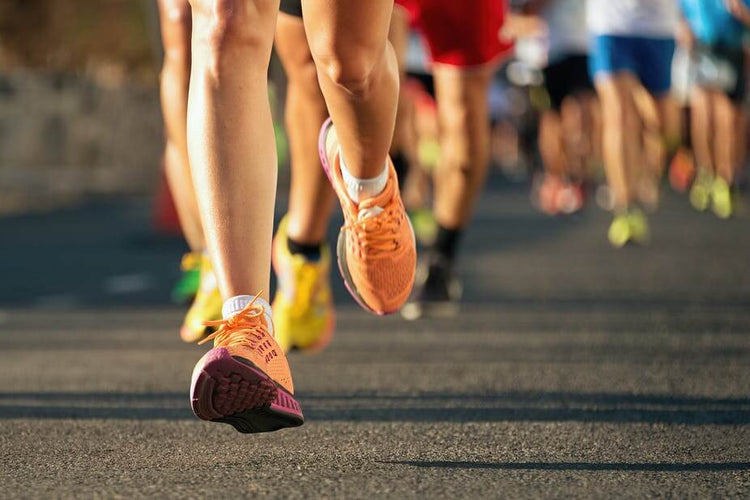
Do Running Shoes CAUSE Injuries?
When I talk to many runners who still use "traditional" running shoes,and then tell them about Xero Shoes, they often say "Well, there's a debate about barefoot/minimalist shoes."First, the quotes are because what we call "traditional" running shoes have only been around for less than 0.05% of the time humans have been wearing protective footwear.Second, there's really no debate.There are people who have opinions that barefoot/minimal is somehow bad based on limited amounts of research, or anecdotes, or information put out by companies that make traditional shoes, and then there is...THE TRUTHYes, I'm implying that the truth is: Natural Movement -- whether you're barefoot or in a truly minimalist shoe like Xero Shoes -- is demonstrably better than being in a padded, motion-controlled, heel-elevated, toe-squeezing shoe.But rather than hash out all my reasons for saying this (which I've done many times on this site), here's a great article that examines "shoes vs. barefoot":https://theconversation.com/running-shoes-may-cause-injuries-but-is-going-barefoot-the-fix-135264Here's the highlight:...if you want to give barefoot running a try, the best advice is to walk before you run. A minimalist shoe might be a good first step if walking or running in extreme temperatures or where sharp objects may be common. Although minimalist shoes aren’t the same as being barefoot, the mechanics runners and walkers use in them are very similar to when barefoot – and dramatically different to when in shoes.And this is the key point. It's about the MOVEMENT, not about the footwear. It just so happens that natural movement is fundamentally impossible in a shoe that, well, doesn't let your foot move. And a truly minimalist shoe can let your body do what's natural, and let your feet bend, flex, move, and FEEL.BTW, a "truly minimalist" shoe isn't the same as a shoe that's marketed as "minimalist" but that doesn't let your toes splay, your foot fend and flex, and your sole get feedback from the ground (which it sends to your brain to help your movement, balance, and agility).
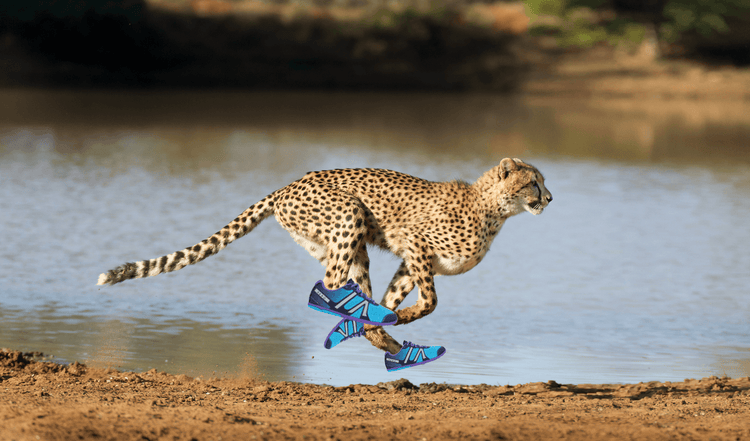
Spot Xero Shoes During Your Next Safari!
Introducing the Front Runner, the first shoe designed to improve the health and performance of rehabilitating cheetahs.The design idea came from New York City Zoologist, Dr. Lex Rodriguez, after noticing that when cheetahs were released back into the wild, the paws of these magnificent cats were not able to handle sticker burrs, hot gravel, sharp rocks, and even the friction they develop by running at over 60 miles per hour.Says Dr. Rodriguez, "I've worn Xero Shoes for years and it occurred to me that the protection, and ground feel you get from these shoes, could be effective for helping these animals transition back to their natural habitat.When he was approached for this project, Xero Shoes CEO was instantly interested."I've been a competitive sprinter since I was a kid," says Sashen. "So it's not surprising that cheetahs are my favorite animal."The Xero Shoes team took their top-selling running shoe, the HFS, and quickly adapted it for feline feet.Both Xero and Dr. Rodriguez were initially skeptical about how the animals would adapt to wearing footwear."We've all seen how domestic cats behave when they step on tape," Sashen said. "They walk around trying to shake it off. We thought the big cats might react the same way."Dr. Rodriquez was more than pleasantly surprised by the initial results. “It’s amazing. They adapted almost instantly. It’s like they don’t even notice or feel anything different, but their performance tells a different story.”Over the last 7 months, the Front Runner was tested on 3 cheetahs of different ages that were preparing for reintegration back into the wild.Reports Dr. Rodriguez, "Wearing the shoes prevented their pads from becoming raw, so they were able to run longer, but they still have the same excellent balance and agility, and their toes can still flex and bend naturally."Most surprising, the cheetahs increased their top speeds by 6%.The zoological research team is still investigating how the performance improvement happens, but the current theory is that the dual-chevron tread gives great traction, without the energy loss that occurs when claws have to dig into the ground.Xero made one significant change between the running shoes they sell online—the Prio, Speed Force, and HFS—they added "Prey Slots" in the FeelTrue rubber soles to allow the cheetah's claws to work naturally when the animal catches prey."There's no value being faster," says Dr. Rodriguez, "if, once you catch up to your prey, you can't, well, finish the job."With just the right amount of protection, the Front Runner should enhance the cheetah's ability to effectively hunt no matter what the elements, keeping the population of prey animals in check and ultimately—helping plant-life by preventing overgrazing.Based on these results, Xero has been approached to develop performance-enhancing footwear for other animals, speedsters and otherwise, including those raised in the wild.Says Sashen, furtively, "I'm not supposed to talk about our 'skunkworks' projects, but we're working on shoes for ostriches, orangutans, and ferrets." Preliminary results are expected by this same date next year.
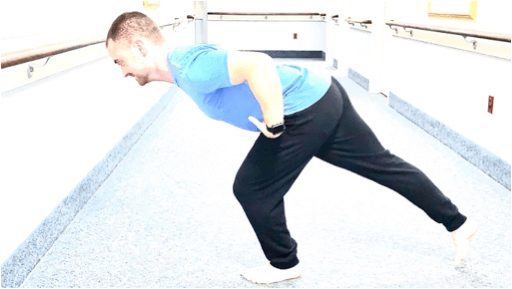
How to Perfect Your Balance
Have you always thought that you just aren't someone with good balance and that's that? Think again. It is totally possible to improve your balance! So how do you do it? Just like a weightlifter needs to lift progressively heavier weights to get stronger, if you want to improve your balance, you need to challenge your balance by placing yourself in unstable positions. In doing so, your body will develop the reflexes needed to maintain balance in that unstable state. This means that you need to be doing exercises that make you wobble...for if you are not wobbling, you are not being challenged. In time, a given activity that once made you wobble, will soon become easy and so you will need to move on to a more difficult activity.Safety first: If you’re concerned that you might fall during a balance exercise, always keep your hand close to some type of support like a sink, counter, or sturdy chair. However, when performing the exercises, you should keep your hands just above your security support and only use them when you feel like you may fall. By having your hands just above the support, you will not rely on your hands to steady yourself and instead will use the balance reflexes found in your feet, legs, and torso. So, let's begin. For an extensive list of balance exercises I regularly use as a physical therapist for patients, head to https://programs.perfectingmovement.net/catalogIf those exercises are either too easy or too difficult for you, all balance exercises can be made more difficult by reducing the amount of visual input you are receiving. This can be done by performing the activity in a darkened room, with eyes squinted, or with eyes closed. In this way, it will limit the amount of visual input your brain receives and so will force you to rely more on your other systems for sensory input.Exercises can also be progressed/modified by standing on an unstable surface such as a foam pad, BOSU ball, wobble board or even a slack line, all of which of course will make you wobble more. As always, anytime you are wobbling, you are challenging yourself and are actively in the process of making your balance better!In this program, I have balance exercises for people of all ages ranging from high-level athletes to geriatrics.So, are balance exercises for athletes too??Absah-freakin-lutely...having good balance as an athlete is crucial toward preventing injuries. This is because good balance is essentially having good neuromuscular control. Without good neuromuscular control, one loses control during movement, and so is at a much higher risk of getting injured. Think about it: Running, cutting, sprinting, braking: all of this happens on one leg at a time. Therefore it is essential to have good neuromuscular control on one leg; ie good balance. Squats and deadlifts are great exercises, but they won’t improve your control/balance on one leg needed for activities like sprinting, cutting, running, and pivoting. Therefore, awesome single balance = not getting hurt = being a real winner.Footwear which can immediately create better balance:When using a thinner, flatter shoe with a wide toe box, one typically has better balance. This type of footwear is called “minimalist”, or “barefoot” footwear. Xero Shoes are definitely my preferred minimalist shoe brand.Here are some of the characteristics and benefits of a minimalist footwear: A wide toe box which allows the toes to splay, creating a wider base of support. A flat sole without support which does not throw off the natural positioning of the foot and ankle. A thin sole which places one’s center of gravity lower to the ground to create improved stability. A thin sole which also allows one to feel the ground more easily. In this way the brain has faster and more descript sensory input needed to create more rapid and effective balance reflexes. In contrast, most traditional shoes have thicker soles, motion limiting “support”, narrow toe boxes, and elevated heels. All of this will disrupt the body’s natural sensory and reactive needed to maintain balance.As a physical therapist, I have had AMAZING success in getting my patients in a minimalist footwear for both reducing pain and improving balance. Once my patients start using minimalist footwear, it is extremely common that they report feeling more balanced and more confident on their feet.Lastly, it is essential that one learns how to walk with proper technique in order to prevent a loss of balance, slip, or a rolling of the ankle. This is because walking with good technique places the foot more beneath the center of mass so that you have better control. Often people take an excessively long stride where the foot is too far forward from the center of mass. The further the foot is away, the less control you have and so are at higher risk of injury. As a guy who used to constantly sprain his ankle, I no longer do so. What changed? I almost exclusively use minimalist shoes and have improved my walking and running techniques. Here is a great video resource to learn how to walk the right way from PerfectingMovement.Net.– James O’Brien MSPT, OCS, CSCS, from PerfectingMovement.netThe content of this post does not constitute and is not intended to be a substitute for professional medical advice, diagnosis or treatment. Always seek the advice of a physician or other qualified health provider with any questions or concerns you may have about your health or a medical condition.



